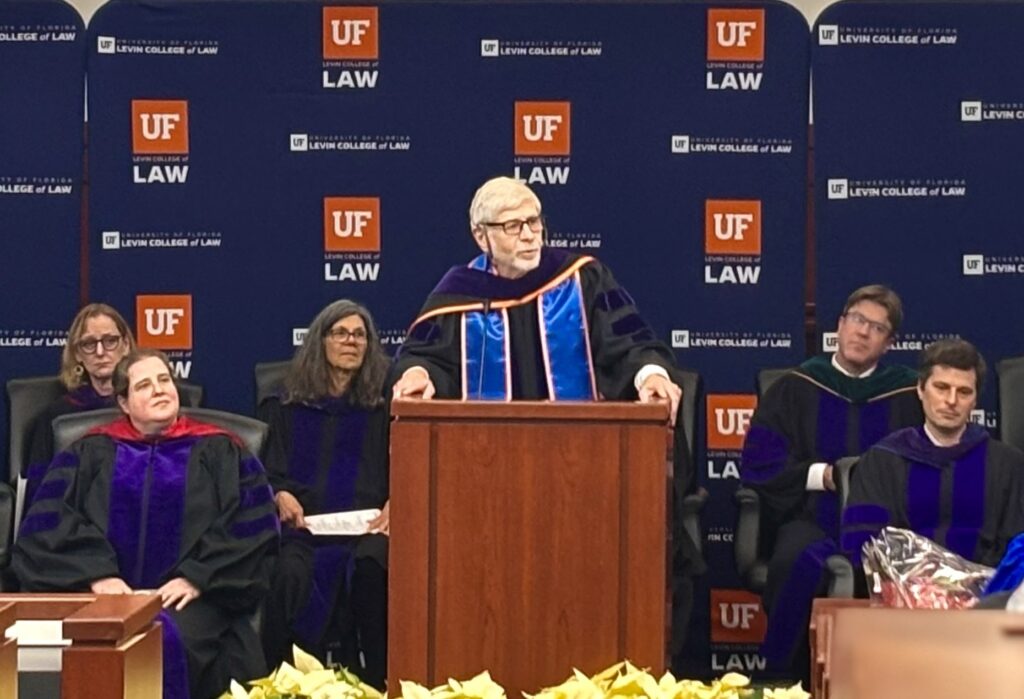 To make good decisions it helps to start with complete, solid data. In other words, reality. However, the truth, the whole truth, and nothing but the truth can be somewhat elusive. I have written several times on the importance of being aware of how data may be “presented” so as to distort or, at best, predispose us toward certain conclusions, and the importance of actively searching out “the rest of the story.”
To make good decisions it helps to start with complete, solid data. In other words, reality. However, the truth, the whole truth, and nothing but the truth can be somewhat elusive. I have written several times on the importance of being aware of how data may be “presented” so as to distort or, at best, predispose us toward certain conclusions, and the importance of actively searching out “the rest of the story.”
A vivid illustration of “selective choice” of data appeared in The New York Times on the subject of judicial pay:
Chief Justice Roberts also said that the real pay of federal judges had dropped about 24 percent since 1969 while the average worker’s real pay rose about 18 percent.
“But this is misleading,” Judge Posner responded. Federal judges received a roughly 30 percent pay raise in 1969. “Had Roberts picked as his base year 1968 rather than 1969,” Judge Posner said, “the picture of decline would have been less dramatic.”
I take no stand on judicial compensation (complete article follows) and I don’t mean to pick on Chief Justice Roberts; selective use of data is too common in political discourse to pick on any one individual. Rather my purpose is to illustrate how easy it is to use statistics to shade a discussion.
——–New York Times Article————-
How Much Should Judges Make?
New York Times, January 19, 2009
by Adam Liptak
Growing, and shrinking, paychecks
Federal judges say they are underpaid. The problem, in Chief Justice John G. Roberts Jr.’s words, “has now reached the level of a constitutional crisis.”
It takes a pretty brave soul to argue the other side.
“I couldn’t find any evidence to support his claim,” Scott Baker, a law professor at the University of North Carolina, said of the chief justice. Professor Baker published a study last year in the Boston University Law Review that considered whether society would be better off were judges paid more as a matter of labor economics.
Its conclusion: “Pretty much nothing would happen if Congress decided to raise judicial salaries.” Money appears to have almost no impact on the quantity and quality of the work judges produce, Professor Baker found, and lots of capable people are eager to take the jobs at the current salary.
A second study to be published in The Journal of Legal Analysis, a peer-reviewed publication at Harvard Law School, goes even further. Its title seems calculated to provoke the people who wear black robes at work: “Are Judges Overpaid?”
G. Mitu Gulati, who conducted the study with Eric A. Posner and Stephen J. Choi, said judges had not embraced their findings. “There was anger and even incredulity that we would even ask the question,” he said.
Federal district judges make $169,300; federal appeals court judges, $179,500; Supreme Court justices, $208,100; and the chief justice, $217,400. There is no question that those salaries, which increased 2.5 percent last year, have dropped significantly in real terms in recent decades or that they represent a small fraction of what partners in big city law firms make.
This year, federal judges, alone among federal employees, did not even receive a cost-of-living adjustment.
On the other hand, being a judge is pretty sweet work and the job is in high demand. It comes with status, power, good working conditions, no clients, the ability to affect policy and the satisfaction of doing justice. Federal judges get very good health care, exceptionally generous pensions and the ultimate in job security—life tenure.
The two sides in the debate, in any event, are mostly talking past each other.
The professors collected data and analyzed it using the tools of economics. They measured things like productivity (number of published opinions), quality (how often other courts cite those opinions), speed (how quickly opinions are produced) and independence (how often judges disagree with colleagues with similar political views).
The study in The Journal of Legal Analysis considered the relative quality of state-court judges around the nation in light of their varying salaries. Professor Baker looked at federal appeals court judges in different parts of the country, taking account of the pay scales at the regional law firms judges might join if they left the bench.
Both studies found almost no evidence that taxpayers would be better off by paying judges more. A possible exception, according to Professor Baker’s study, is that “low salaries lead to slightly fewer dissents.”
Frank B. Cross, a law professor at the University of Texas and a sophisticated empiricist, said the new studies went off the rails. “I love these economic tools,” Professor Cross said. “But we don’t have a good measure of judicial quality.”
“Given the anecdotal evidence, economic logic and the great importance of a quality judiciary,” he wrote in a reply to Professor Baker, “the case for a judicial pay raise is reasonably strong.”
Many judges say the entire enterprise is absurd and insulting. “The country wants and deserves the strongest possible judiciary, and we should be willing to pay for that,” said David F. Levi, the dean of Duke Law School and a former federal judge. (He said he did not step down for financial reasons.)
Chief Justice Roberts, in his report on the state of the judiciary at the end of 2006, cited a few kinds of data to support his argument that low pay was leading to a crisis. One was that 38 judges left the federal bench from 2000 to 2005, some citing the need to make more money.
Richard A. Posner, a prominent federal appeals court judge in Chicago (and the father of Eric Posner), called this “crying wolf” in his recent book, “How Judges Think.” The chief justice had lumped retirements and resignations together, Judge Posner said. Only 12 federal judges had resigned out of a total of 1,200 active and senior judges in the years in question, a small number in absolute terms and a smaller percentage than in the six years ending in 1974.
Judge Posner did not dispute that low pay may meant that there were fewer judges coming from private firms, but he did not see why that should matter so long as there appeared to be plenty of qualified candidates.
Chief Justice Roberts also said that the real pay of federal judges had dropped about 24 percent since 1969 while the average worker’s real pay rose about 18 percent.
“But this is misleading,” Judge Posner responded. Federal judges received a roughly 30 percent pay raise in 1969. “Had Roberts picked as his base year 1968 rather than 1969,” Judge Posner said, “the picture of decline would have been less dramatic.”
What is most interesting about the basic argument made for a judicial pay raise is that it appeals to a value that many judges resist in other contexts. It is an argument about fairness and respect. It is the sort of argument liberals make for raising the minimum wage or for laws that guarantee equal pay for equal work.
Professor Baker said those arguments ought not matter. “Judicial selection has to be subjected to cost-benefit analysis just like everything else,” he said.
But he acknowledged a human dimension to the question.
“I got some e-mails from judges saying, ‘How would you like it if your salary were not raised?’” Professor Baker said. “I kind of feel sympathetic to that. I’d probably be mad.”




